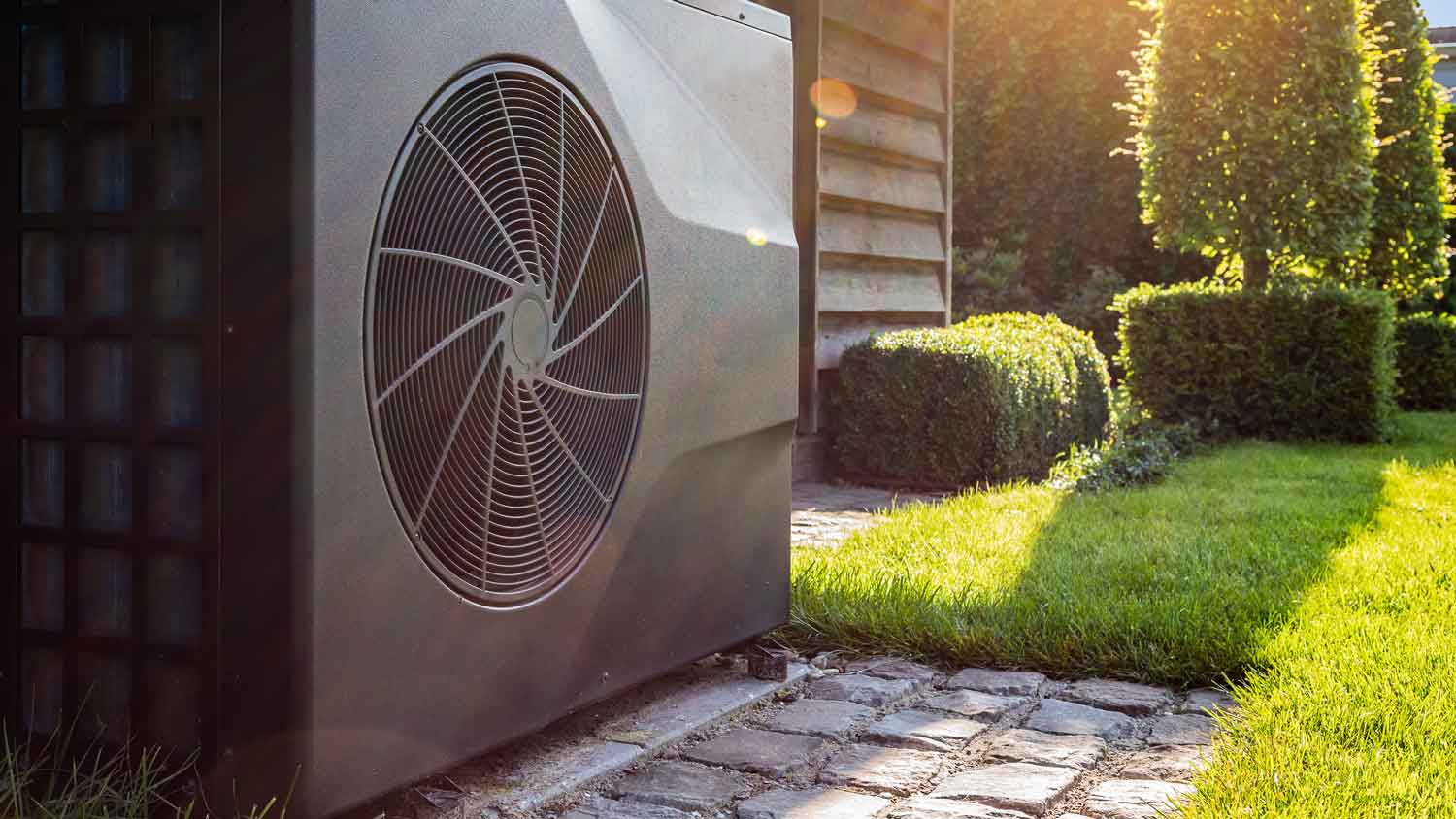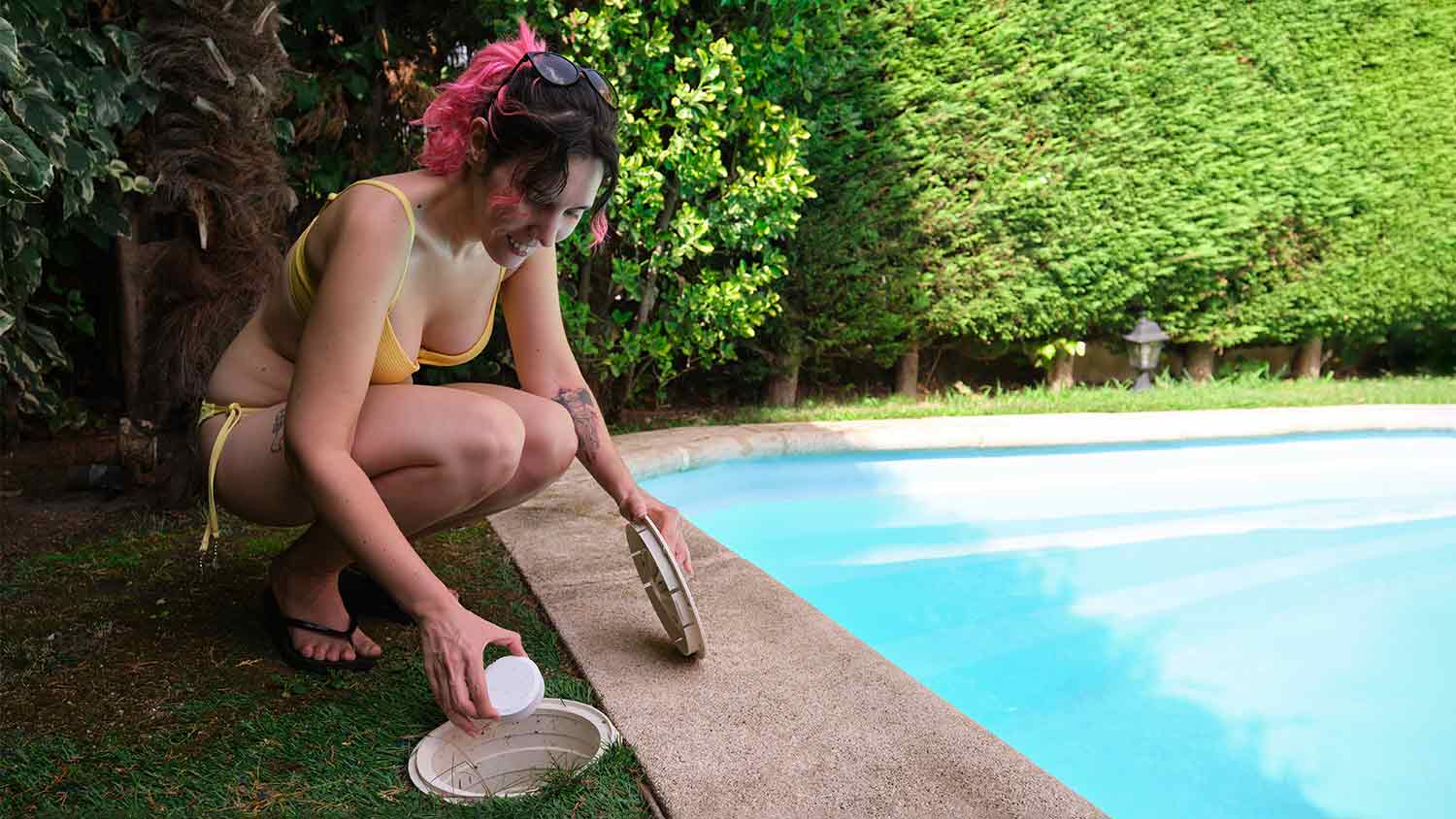
When you're long overdue for a pool upgrade, how much does a pool remodel cost? From a new finish to a whole new design, we'll break down your options here.
Dive in (not literally) and fix the issue


A clogged or dirty filter is the most common culprit for a pool heater malfunction.
A low thermostat setting or short timer might also be the issue.
Contact a local pool pro for any electrical or gas problems or to replace a part.
Your pool heater keeps shutting off or the water is not getting warm, and all you want is to take a dip or swim some laps. Luckily, you can often get a pool heater working again with a little decoding. Dive into our pool heater troubleshooting guide to figure out what might be wrong and when to call in a pool pro.
You pool heater is potentially not heating enough due to the following reasons:
Clogged or dirty filter
Faulty safety switch or gas valve
Thermostat set too low
Pilot light issue
Closed plumbing valves
Lack of power source
Damaged wiring
Poor ventilation
Outdoor temperature under 60 degrees Fahrenheit
Some of these problems are avoidable, as long as you do not cut corners when budgeting for swimming pool maintenance costs. Additionally, note that your final swimming pool repair costs will vary depending on the issue at hand and whether you are able to do a DIY fix. Either way, we will break down how to solve common issues below.
If your pool heater turns on but shuts off soon after, a dirty filter might be the problem. It could also be a safety switch, thermostat setting, or corroded electrical terminal. You can try a variety of solutions to remedy the issue.
Your pool heater needs enough water pressure to run properly, usually at least 40 GPM (gallons per minute). If your heater is not getting a steady stream of water, it could be due to a clogged filter or dirty pump basket.
Turn off your heater and pump before cleaning. Clean the filter, skimmer, and pump baskets. Remove all removable parts, take out debris, and rinse with a hose before reinstalling the piece. Turn your pool heater back on. If you still do not have enough water pressure, consider checking valves and safety switches.
Your pool heater might not be working due to a disabled or faulty safety switch. Consult your pool heater manual to determine where the safety switches are. The basic circuit known as the control loop houses the pressure switch, high-limit switch, gas valve, thermostat, and pilot generator.
If you have experience and comfort working with electrical circuits, there is some troubleshooting you can do. For each switch, check the voltage with a multimeter, being sure to follow safety precautions such as wearing insulated gloves and ensuring the area is dry before testing. Continue checking each switch throughout the control loop until you find the issue. If you find a switch that is not working, use a jumper wire to bypass it, making solid contact with both terminals.
If you do not feel comfortable using a multimeter and working with electrical systems, contact a local pool repair company to assist you.
Your pool heater's thermostat might be set too low. Turn it up (at least above the current temperature of the pool) and see if that fixes the problem. If you have an older heater, the contacts in the thermostat might be dirty. Move the knob back and forth to clean the contacts.
Your pool heater may need more time to heat the water. Adjust the timer for a longer period and try again.
If it is too cold outside, usually less than 60 degrees Fahrenheit, it may be too cold for your heater to run. While some pool heaters can operate in temperatures ranging from 30 degrees Fahrenheit and up, not all do. You may need to wait for warmer weather to run the pool heater.

The plumbing valves should be open for water to flow to the heater. The valves are located on the connectors between the pipes that lead from the pool to the pump and heater. Check to make sure your plumbing valves are open and connected correctly.
If you have an electric pool heater, check the electrical terminals for corrosion. Clean any corrosion by first turning off the heater at the power source and then scrubbing the terminals with a metal brush.
If your pool heater is still not working after troubleshooting other options, you may need to replace a part, such as the pressure switch, high-limit switch, heating element, or motor.
Contact a local pool pro to inspect your unit. Replacing a part yourself can be tricky and may void any warranties. A pro can also ensure you get a compatible replacement part that will not damage your heater.
If you are running your heater for the first time, the issue could lie with your pool pump. It might not be powerful enough to supply your heater's water pressure. You may want to upgrade the pool pump to a variable-speed pump, but consider other alternatives first or contact a local pool service company to verify the root issue.
It is possible your pool heater is not powerful enough for the size of the pool you have. Determine the pool heater size you need based on your pool’s surface area, depth, and volume. Consider installing a new pool heater that optimally heats your pool.

If your pool heater is not turning on, check the power source and the wiring on your unit.
Ensure your pool heater is plugged in and turned on and that there are no electrical issues, such as a tripped breaker. Reset the breaker in your electrical panel if needed.
If your pool heater still needs to be fixed, the circuit may need more amperage. A local electrician can assess your amperage and help make any adjustments.
If you are booting up your pool for the first time this season, the gas supply leading to your heater might be turned off. Turn on the gas valve and retry the pool heater.
Without the pilot light, your heater will not fire. To get a closer look, hold a handheld mirror up to it. Never put your face or eyes near the pilot light.
If there is no spark, you may need to replace your ignition control (you can test it first with a voltmeter to see if it has enough voltage). If you see a spark but the pilot still does not light, you may have a faulty gas valve, clogged pilot assembly, or poor ventilation. Clean the pilot assembly (with the power source turned off at the breaker) if needed, and remove any debris or items that are blocking the vents from proper airflow.
Check for any damaged wiring on your unit that could be causing a weak electrical connection. If the wiring is damaged, contact the heater’s manufacturer or an electrical company to see if they can repair it. Electrical problems should be handled by a licensed expert, as there can be serious risks involved.
If you are seeing error codes on your pool heater, use them as clues to determine the root problem.
Common pool heater error codes such as “Lo/Hi” or “Flo" often mean a water pressure issue. In this case, it is likely that the filter needs cleaning or replacement.
If you have the manufacturer's handbook for your pool heater, look at the error code section. It often describes what each code means and how to resolve the issue. If you have misplaced your manual, find the brand and model online to determine what the code means.
A pool heater can sometimes appear to be leaking when it is often just condensation due to a difference in temperatures. But sometimes a pool heater can experience an actual leak.
Look to see if there are any loose connections or leaky gaskets. If there are none, you may need to replace the heat exchanger or install an external bypass to reduce water flow. Certain chemicals used to clean pool water can damage the heat exchanger over time and too much water flow can lead to heater leaks.
If a pool heater will not shut off, it can cause extremely high water temperatures and pose a significant danger. It is best to contact a pool service company right away if this happens.
A gas pool heater can expel dark exhaust or be black on top if there is excessive heat. Check the gas pressure on your valve and ensure the heater has proper air ventilation. In some cases, wind or down-drafting can cause poor ventilation. You can install a high wind stack accessory on your pool heater to mitigate this problem. Installation is usually straightforward and can be done as a DIY project.
Pool heaters normally make some noise, but anything unusual can indicate a problem you need to fix. A grinding noise could mean there is debris stuck inside the heater which you may be able to fix with a system flush. Or you might have hard water scale buildup in your pool, pipes, or the pool heater exchanger. You will need to get rid of all the calcium deposits, which may require you to call in a pool tech.
Whistling sounds, on the other hand, can reveal a problem with gas pressure. You may need to clean out your burner orifice or adjust the gas pressure valve. A bad pressure switch can also cause grinding or whistling sounds. You may need to replace the switch to get rid of the noise.
You are waiting for the water to heat up, but it is taking a long time. If you are noticing that your heater is cycling on and off without the water temperature changing, there are a few potential culprits.
Check that you set the thermostat to the right temperature. If you have a variable-speed pump, make sure that your pump speeds are high enough to kick the heater on. If you are unsure, check the operation manual.
If your pool heater is running but the water is not getting warm, check your filter. If it is dirty, clean it or get a new one. Make sure that the heat exchanger, thermal regulator, pressure sensor, and limit switch are in good, clean working order.
After all these steps, if you are still stumped, call a technician and ask them to check the electrical connection.
From average costs to expert advice, get all the answers you need to get your job done.

When you're long overdue for a pool upgrade, how much does a pool remodel cost? From a new finish to a whole new design, we'll break down your options here.

Discover the average cost of an automatic pool cover, key price factors, and expert tips to help you budget for installation or replacement.

Removing a pool is a labor-intensive job, but the investment can be worth it. Use this pool removal cost guide to estimate how much you’ll pay for the service.

Our chlorine calculator helps you determine the exact amount of chlorine to add to your pool, based on its volume and your desired parts per million (ppm) level.

The key to maintaining an aboveground pool is using the right tools and chemicals for the job. Use this guide to learn how to clean an aboveground pool.

Ready to say goodbye to your swimming pool and hello to lush, green grass? Learn how to fill a swimming pool with dirt to ensure proper drainage for an even yard.